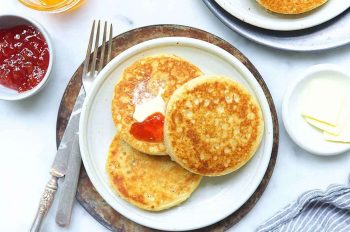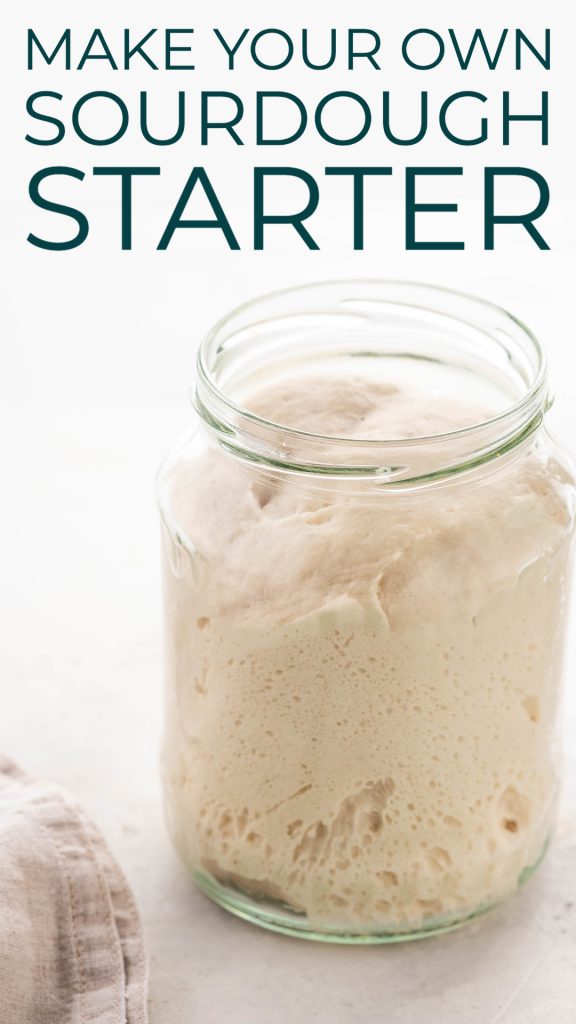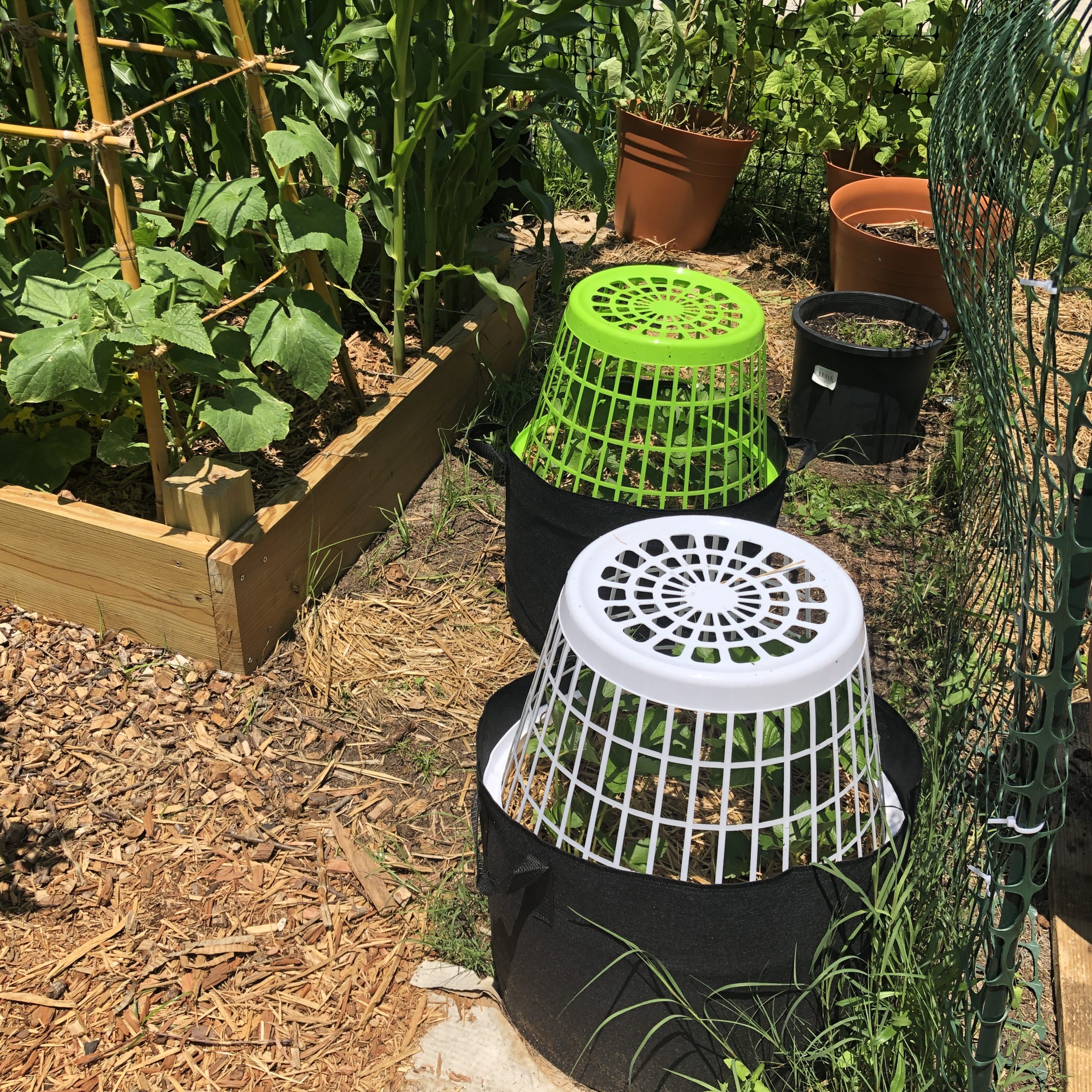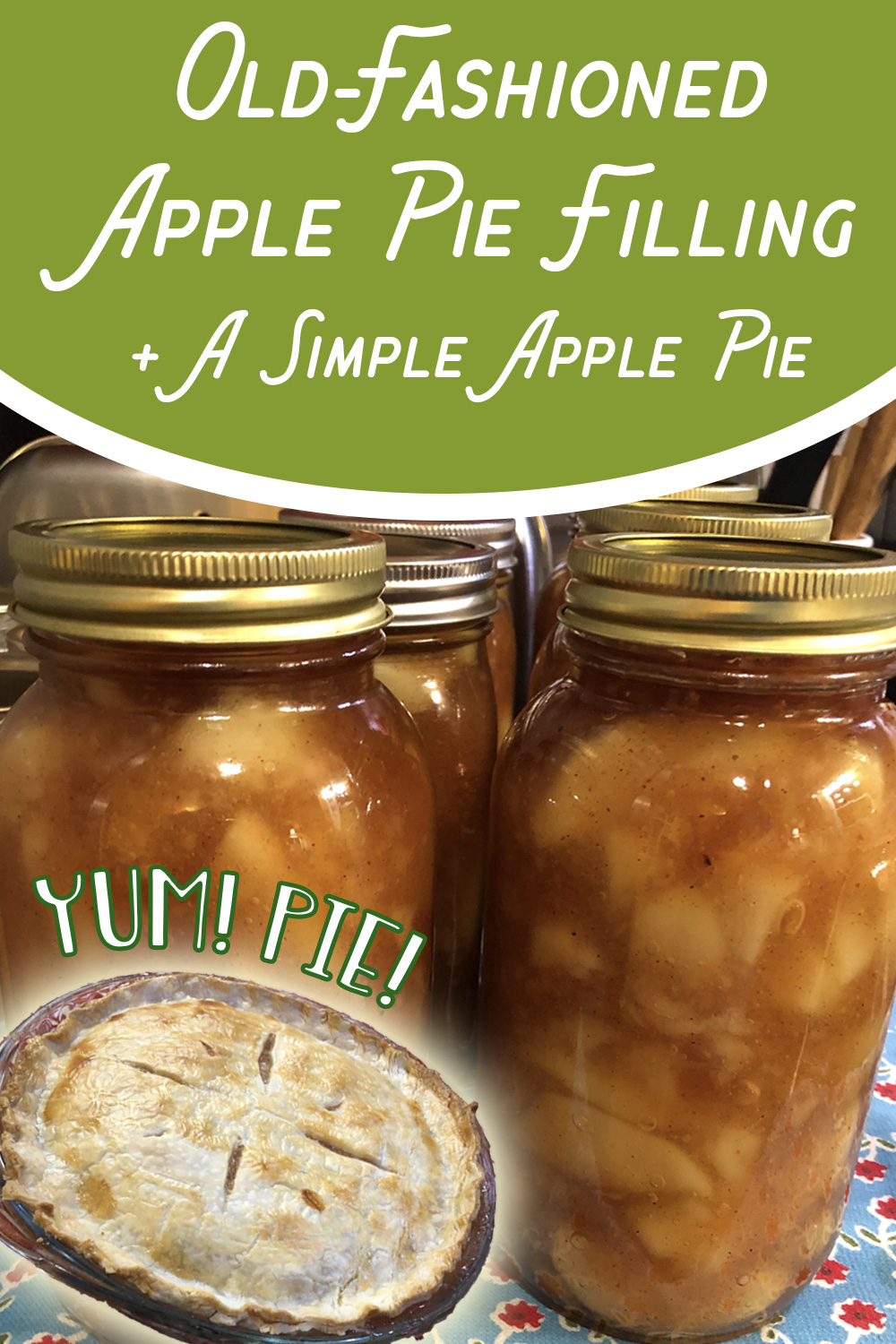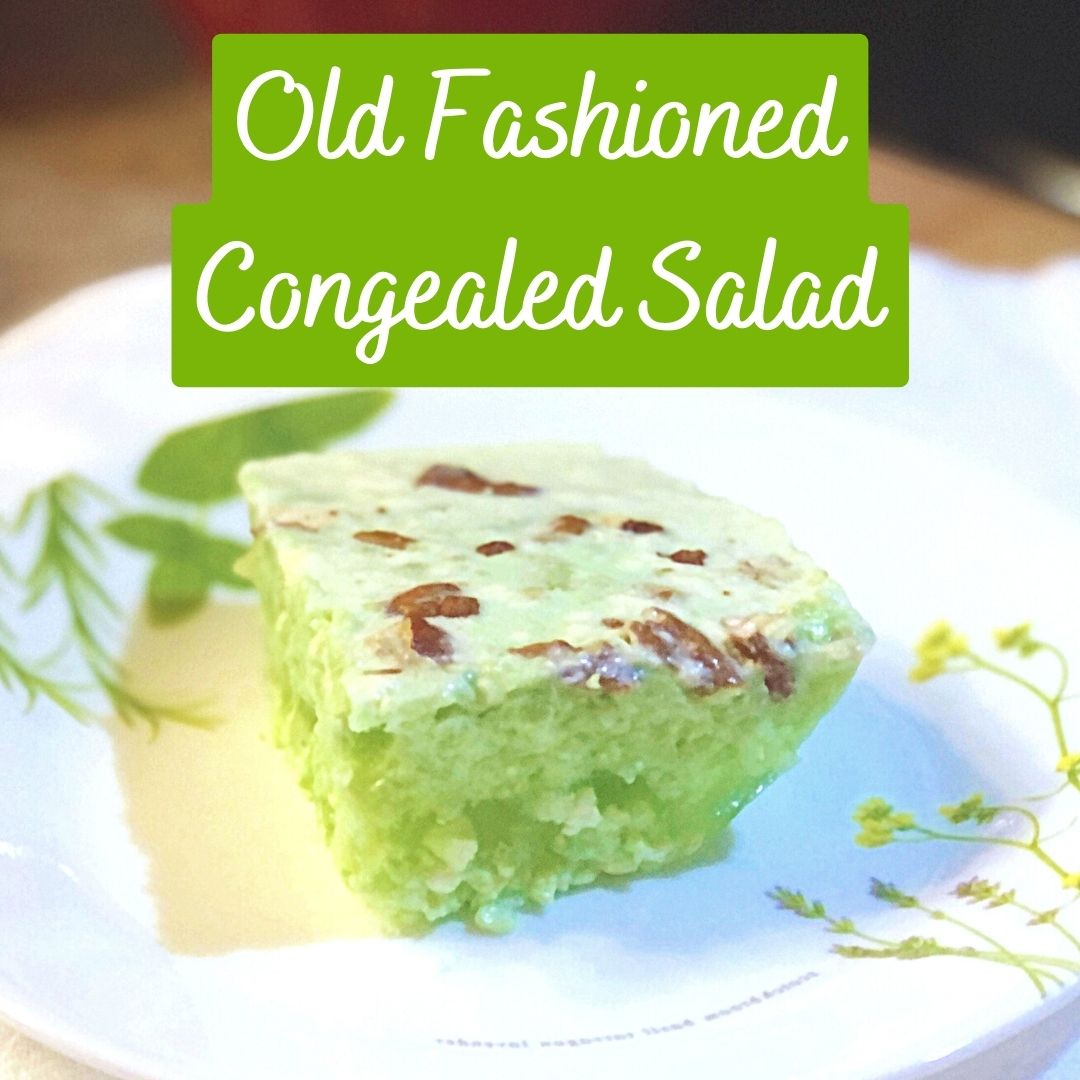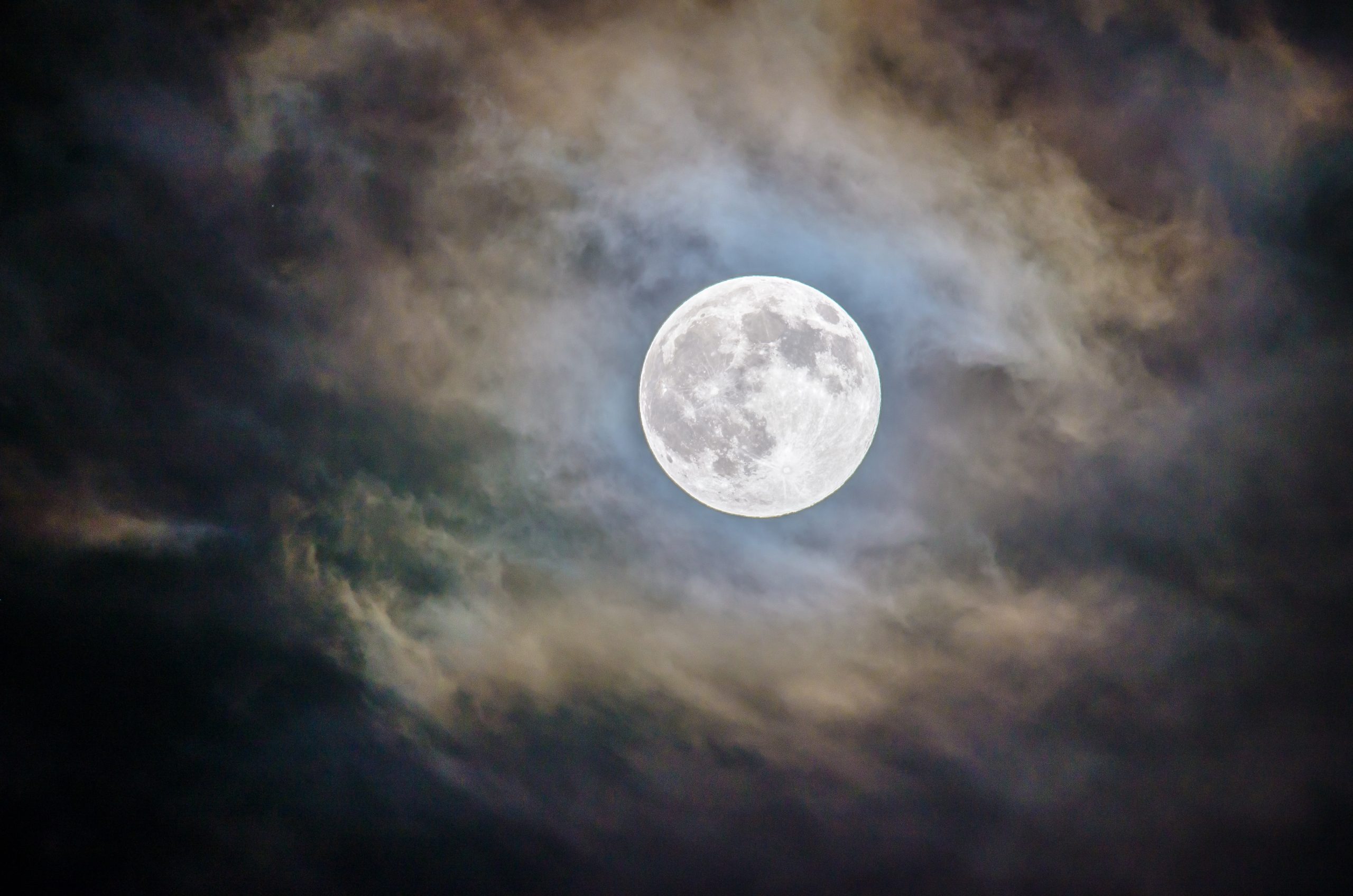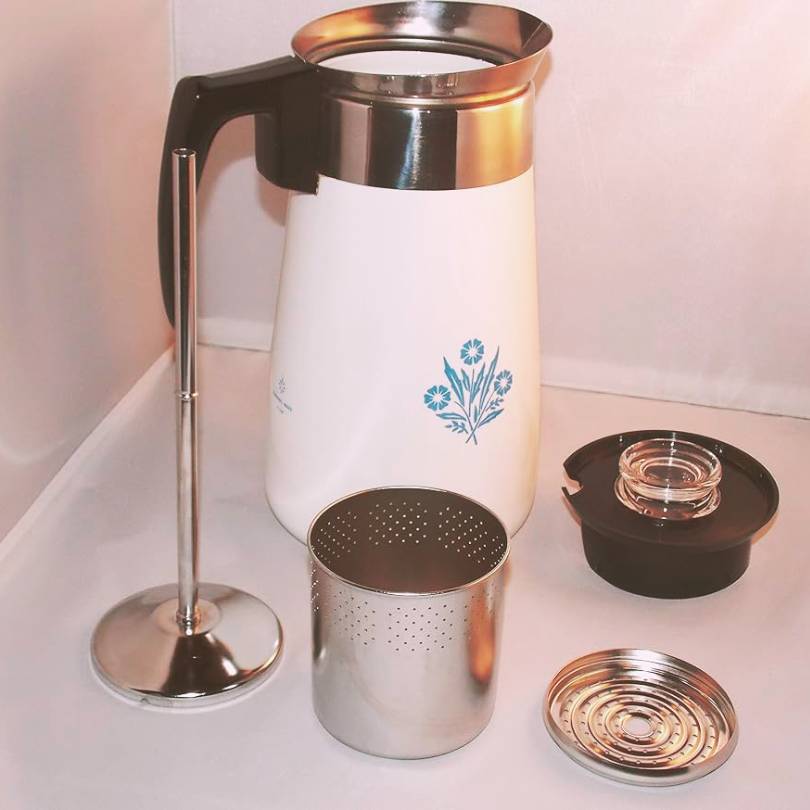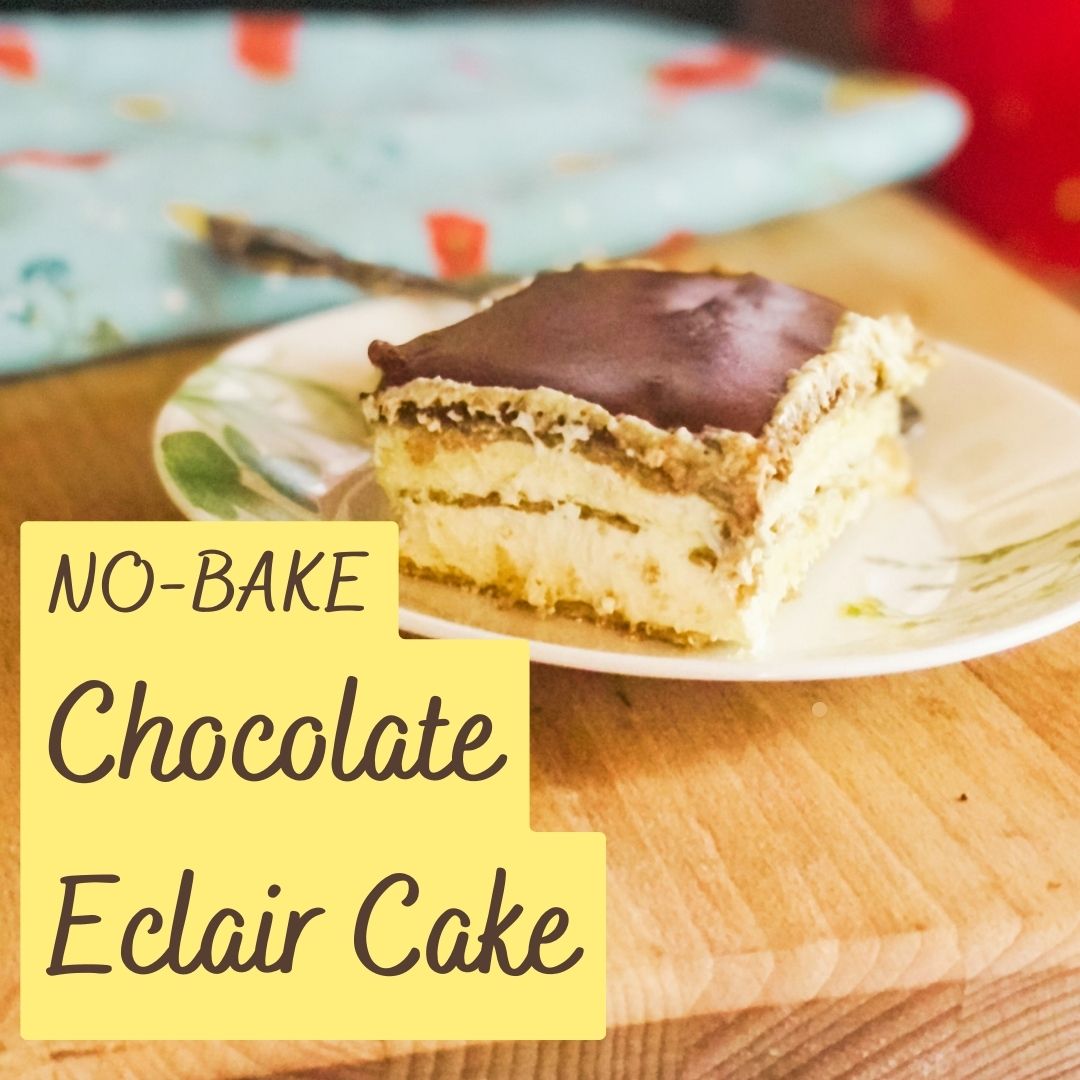
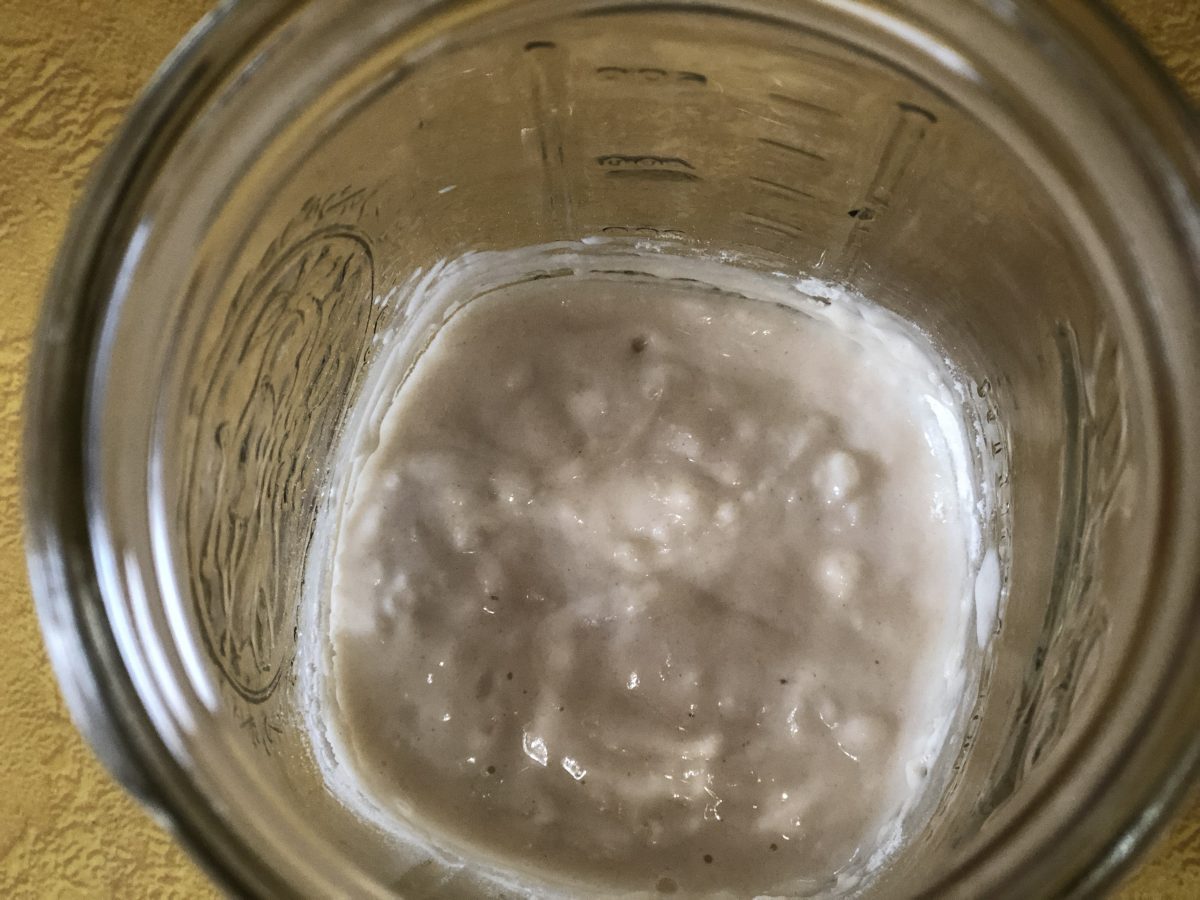
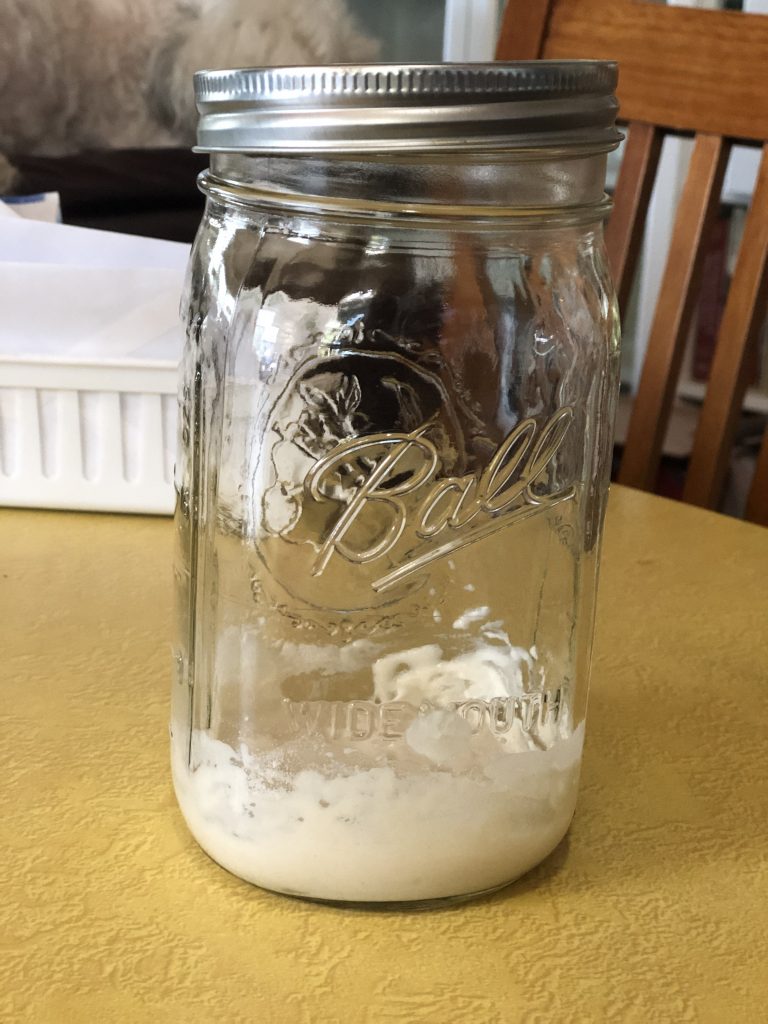
You can make sourdough starter by catching wild yeast. No need to buy yeast from the store! It’s super easy. All you need is a clean quart jar, some flour, and some water.
Here’s what you do to make sourdough starter:
- Get a clean quart jar. (If you don’t have any jars, you can also use a plastic food container, but nothing metal. Ideally something that is about the size of a quart jar, nothing smaller.)
- Add equal parts of all-purpose flour and water.* I usually start with about 2 to 3 Tbsp. flour and 2 Tbsp. water. (*See important note about water at the bottom of this article.)
- Stir with a clean utensil. I like to use a chopstick that I keep for exactly this purpose.
- Cover jar loosely with lid. DO NOT TIGHTEN. Air needs to be able to get in and out.
- Put jar out of the way on your counter or even in a cabinet. Stir it two or three times daily.
- Each day feed the starter with a roughly equal amount of flour and water. Don’t be alarmed if there is liquid at the top of your starter. That’s perfectly normal. Just stir it back in or pour it out if you prefer.
- Once the starter is developing a healthy amount of yeast it will begin to have some air bubbles that are visible from the sides of the jar. It will also smell yeasty, like warm bread or beer.
- Soon, you will be able to use the starter in a variety of bread recipes.
Maintaining your starter
You will need to continue to feed the starter daily if left out at room temperature, but if you don’t plan to bake often, you can refrigerate it and feed it once a week, discarding half of what is in the jar before feeding it with fresh flour and water.
Discarding your starter doesn’t necessarily mean throwing it away! One of my favorite things to do with discarded starter is to make Sourdough Crumpets.
How do you know if your starter is strong enough to bake a loaf of bread? It should double in size from rising within six hours of feeding.
Once you have a strong, healthy starter, find a recipe that appeals to you and get baking! There are so many available online for all different tastes.
Troubleshooting tip: Weird smells
Sometimes after the first couple of days the starter can smell cheesy or weird. In fact, this is not uncommon for the first week. A battle royale is going on between any bacteria that is present and the yeast you are trying to culture.
As long as the color is consistent and no mold is growing, everything is fine. After several more days the wild yeast should take over and produce the aroma that you would expect from bread dough.
